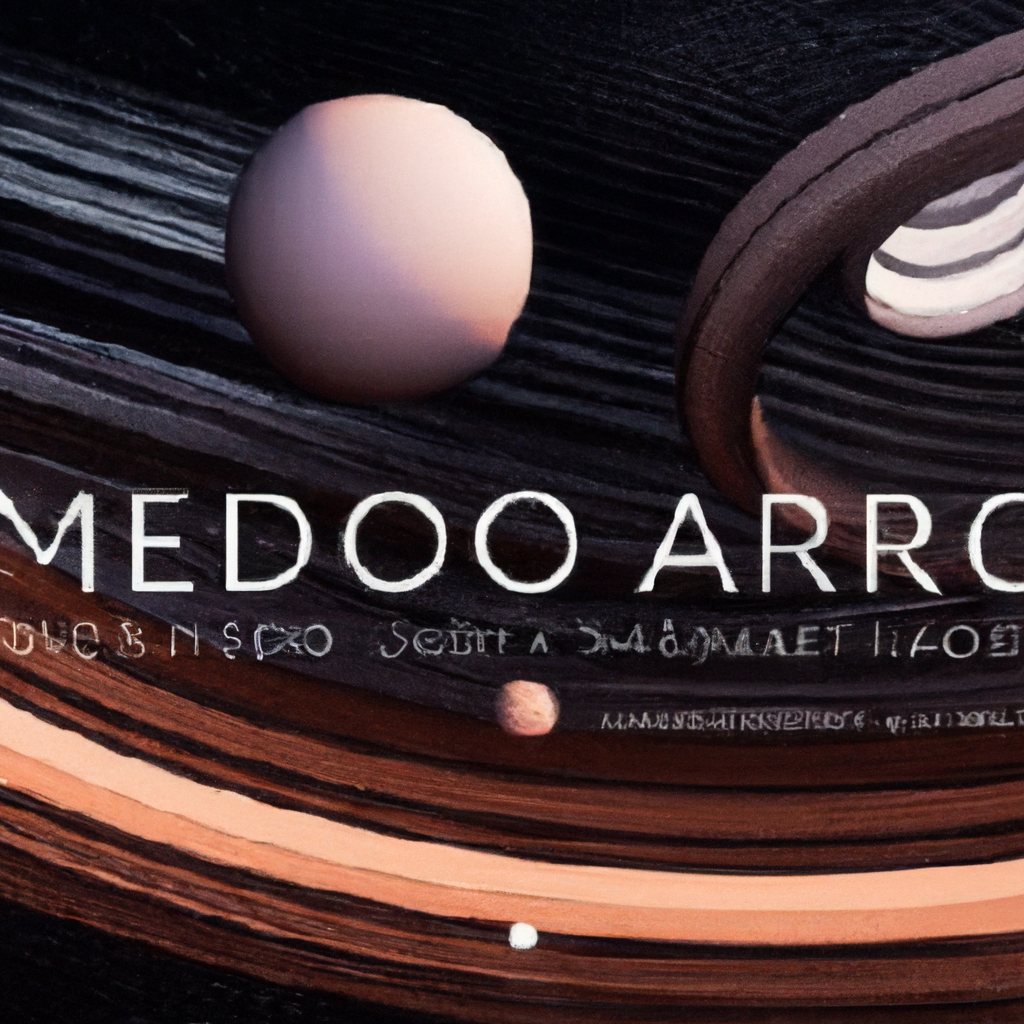Have you ever looked up at the night sky, gazing at the bright twinkling stars, when suddenly, you notice something peculiar happening? Those celestial bodies, known as planets, that usually move steadily across the sky, seem to be moving backwards! You might have found yourself wondering why this phenomenon occurs. In this article, we will unravel the mystery behind why planets sometimes appear to move backward in the sky, shedding light on this fascinating celestial spectacle.

Table of Contents
What is Planetary Retrograde?
Planetary retrograde refers to the apparent backward motion of planets in the sky when observed from Earth. This phenomenon has fascinated astronomers, astrologers, and scientists alike for centuries. It has played a significant role in shaping our understanding of the solar system and has had profound impacts on astrology and religion. To truly comprehend the intricacies of planetary retrograde, one must delve into its definition, observe its occurrence, and examine its historical background.
Definition
Planetary retrograde, in simple terms, is the optical illusion that occurs when a planet, when observed from Earth, appears to move in the opposite direction of its usual orbital path. In reality, planets follow elliptical orbits around the Sun, and their apparent backward motion is a result of our perspective from Earth. This illusion arises from the varying speeds and distances of the planets in relation to Earth.
Observation
Avid stargazers may have noticed the fascinating phenomenon of planetary retrograde during their stargazing adventures. Through careful observation, one can track the regular motion of planets across the sky and witness the periods when they seemingly change direction. This curious occurrence occurs sporadically, adding a touch of enigma and awe to our night sky.
Historical Background
The concept of planetary retrograde dates back to ancient times. In the geocentric model, developed by early civilizations, including the Ancient Greeks and Mesopotamians, it was believed that the Earth was at the center of the universe, and all celestial bodies, including the Sun and planets, revolved around it. These ancient astronomers observed the peculiar motion of planets, leading to the formulation of theories and beliefs about the nature of our cosmos.
The Geocentric Model
Ancient Beliefs
In the geocentric model, the prevalent belief was that the Earth was the stationary center of the universe, with the Sun, Moon, planets, and stars rotating around it. This view was ingrained in the works of prominent thinkers such as Aristotle and Ptolemy. The observation of planetary retrograde played a critical role in shaping their theories, as it challenged the notion of uniform circular motion and raised questions about the underlying mechanisms of the observed celestial motions.
Epicycles and Retrograde Motion
To account for the irregular motion of planets, astronomers in ancient civilizations introduced the concept of epicycles. According to this theory, planets moved in small circles called epicycles while traveling along their larger circular paths called deferents. The combination of these motions resulted in the apparent retrograde motion observed from Earth. This explanation of planetary retrograde served as the foundation of the geocentric model for centuries.
Clash with Heliocentric Model
The discovery of heliocentrism by Nicolaus Copernicus in the 16th century posed a significant challenge to the geocentric view and the explanation of planetary retrograde it offered. Copernicus proposed that the Sun, not the Earth, occupied the center of the solar system, with planets orbiting it. This revolutionary idea marked a turning point in our understanding of celestial motion and paved the way for later advancements by astronomers like Johannes Kepler and Galileo Galilei.
The Heliocentric Model
Copernicus’ Theory
Nicolaus Copernicus’s heliocentric model presented a new perspective on the motion of celestial bodies. According to Copernicus, the planets, including Earth, revolved around the Sun in elliptical orbits. This model offered a simpler and more accurate explanation for the observed motion of planets, including retrograde periods. However, it faced resistance from existing beliefs and religious authorities.
Advancements by Kepler and Galileo
Johannes Kepler further refined the heliocentric model by introducing his laws of planetary motion in the early 17th century. Kepler’s laws provided a mathematical description of planetary motion, accurately predicting their paths and timings. Galileo Galilei’s telescopic observations supported the heliocentric model and provided visual evidence of planetary phases and the existence of moons orbiting other celestial bodies. These advancements solidified the heliocentric theory and reinforced our understanding of planetary retrograde.
Understanding Retrograde Motion
Orbiting Speed and Distance
To understand retrograde motion, it is crucial to consider the varying speeds and distances of the planets in relation to Earth. Due to their differing orbital periods, planets experience variations in their orbital speeds. This difference creates opportunities for relative motion between Earth and other planets, leading to the illusion of backward motion during certain periods.
Relative Motion
When Earth and another planet are aligned on the same side of the Sun, their relative speeds and distances affect the perception of their motion. As Earth orbits the Sun at a faster speed, it overtakes the outer planets (Mars, Jupiter, and Saturn) periodically, causing them to appear to move backward in the sky. This fleeting phenomenon is known as apparent retrograde motion.
Oppositions and Conjunctions
Oppositions and conjunctions play a vital role in analyzing retrograde motion. Opposition occurs when a planet is directly opposite to the Sun, appearing brightest in the night sky. Conversely, conjunction refers to the alignment of a planet and the Sun when observed from Earth. These celestial events offer opportunities to witness retrograde motion, providing astronomers and enthusiasts with valuable insights into the intricate workings of our solar system.

Apparent Retrograde Motion
Earth’s Orbit vs. Outer Planets
Planetary retrograde motion is primarily observed when Earth overtakes the outer planets during their respective orbits around the Sun. As Earth’s orbit is closer to the Sun, it takes a shorter time to complete, causing the periodic overtaking of outer planets. This relative motion creates the illusion of backward motion when observing the planets from Earth.
Visual Illusion
The visual illusion of planetary retrograde arises due to the difference in orbital periods and speeds of Earth and other planets. While planets maintain their regular orbital paths around the Sun, the relative motion between Earth and these planets creates optical discrepancies. This illusion has fascinated astronomers for centuries, driving them to investigate and explain this intriguing celestial phenomenon.
Synchronization with Earth’s Motion
The occurrence of planetary retrograde is synchronized with Earth’s motion, as it relies on the positioning of the planets in relation to our planet. The timing of retrograde periods can be predicted based on the orbital periods and relative positions of Earth and the planets being observed. By understanding this synchronization, astronomers can accurately forecast and observe the occurrences of retrograde motion.
Influence of Retrograde Motion
Astrological Interpretations
Astrology has long interpreted the phenomenon of retrograde motion as a significant influence on individual natal charts and horoscopes. Retrograde planets are believed to represent themes like introspection, reflection, and karmic lessons. Astrologers analyze the position and motion of retrograde planets in conjunction with other celestial bodies to provide insights into one’s personality, relationships, and life events.
Impacts on Astrology and Religion
The occurrence of retrograde motion has had a profound impact on astrology and religious beliefs throughout history. Ancient civilizations attributed divine meanings to the irregular motion of planets, associating them with gods, goddesses, and omens. This influence is still prevalent in modern astrology, where the retrograde motion of planets continues to shape interpretations and predictions.
Modern Scientific Understanding
While astrology continues to explore the metaphorical and symbolic implications of retrograde motion, modern science provides a more empirical understanding of this phenomenon. Through extensive observations, calculations, and advancements in technology, scientists have unraveled the mysteries behind retrograde motion, attributing it to relative planetary motion and Earth’s positioning in the solar system.

Occurrence of Retrograde Motion
Planets Subject to Retrograde Motion
The most common planets subject to retrograde motion are Mars, Jupiter, and Saturn. These outer planets take longer to orbit the Sun compared to Earth, increasing the likelihood of Earth overtaking them during their respective orbits. Although all planets can experience retrograde motion, the inner planets (Mercury and Venus) are less prone to this phenomenon due to their shorter orbital periods.
Frequency and Duration
The frequency and duration of retrograde motion vary for each planet. Mars, for instance, experiences retrograde periods approximately every 26 months, lasting around 70 days. Jupiter’s retrograde periods occur about once a year, spanning around 120 days, while Saturn’s retrograde periods take place roughly every 12 months, lasting approximately 140 days. These cycles provide ample opportunities to witness and study retrograde motion.
Phenomenon Beyond Planets
Retrograde motion is not limited to planets within our solar system. Moons, asteroids, and comets can also experience this phenomenon. The motions and interactions of these celestial bodies add a layer of complexity to our understanding of retrograde motion, prompting further exploration and observations beyond the realms of planets.
Impact on Astrological Charts
Effects on Natal Charts
Astrological charts, including natal charts, incorporate the positions and motions of celestial bodies, including retrograde planets. The inclusion of retrograde planets in a chart adds depth and complexity to an individual’s astrological analysis. Retrograde planets are often associated with intensified energies, internalized experiences, and areas of life that require greater introspection and self-reflection.
Retrograde vs. Direct Motion
In astrology, retrograde motion is considered distinct from direct motion, carrying its own set of symbolic interpretations. Direct motion refers to the regular forward motion of planets, while retrograde motion calls for a different set of considerations. The contrasting energies and qualities associated with these motions provide astrologers with valuable insights when interpreting charts and making predictions.
Interpretations in Astrology
Astrologers interpret the presence of retrograde motion in various ways, depending on the planet involved and its position in the astrological chart. Retrograde planets are often believed to represent areas of life where challenges, delays, or internal struggles may arise. However, they can also signify unique strengths, talents, and opportunities for growth. These interpretations form the foundation for personalized readings and horoscope analyses.

Observing Retrograde Motion
Naked-eye Observation
For centuries, retrograde motion was observed solely through naked-eye observation. Ancient astronomers meticulously tracked the positions of planets in the night sky, noting any apparent changes in direction. This approach required a keen eye and dedication to detail, paving the way for future discoveries and ongoing studies.
Amateur and Professional Tools
Advancements in technology have allowed both amateur astronomers and professionals to observe and study retrograde motion in greater detail. Telescopes, binoculars, and other astronomical tools enhance our ability to track the path and motion of planets with higher precision. These tools enable enthusiasts to witness retrograde phenomena and contribute to ongoing research.
Space Missions and Telescopes
Space missions, such as those conducted by NASA and other space agencies, have provided unprecedented insights into retrograde motion. Robotic spacecraft like Voyager and Cassini have captured detailed images and data from the outer planets, allowing us to observe and understand their complex orbital dynamics. Additionally, high-powered telescopes, both terrestrial and space-based, continue to unveil new details about retrograde motion and its significance.
Conclusion and Further Research
The study of planetary retrograde has come a long way since its early observations in ancient times. From the geocentric model to the heliocentric model, our understanding of this optical illusion has grown exponentially. Retrograde motion continues to captivate astronomers, scientists, and astrologers, offering a window into the dynamics of our solar system and its profound influence on various aspects of life.
Continued research in this field holds the potential for further discoveries and explanations. Astronomers and astrologers will continue to collaborate, providing new insights into the mechanics and implications of retrograde motion. Proposed explanations and theories will be explored, and future space missions and technological advancements will push the boundaries of our knowledge. The study of planetary retrograde remains an ever-evolving field, inviting us to delve deeper into the mysteries of our celestial neighbors.
